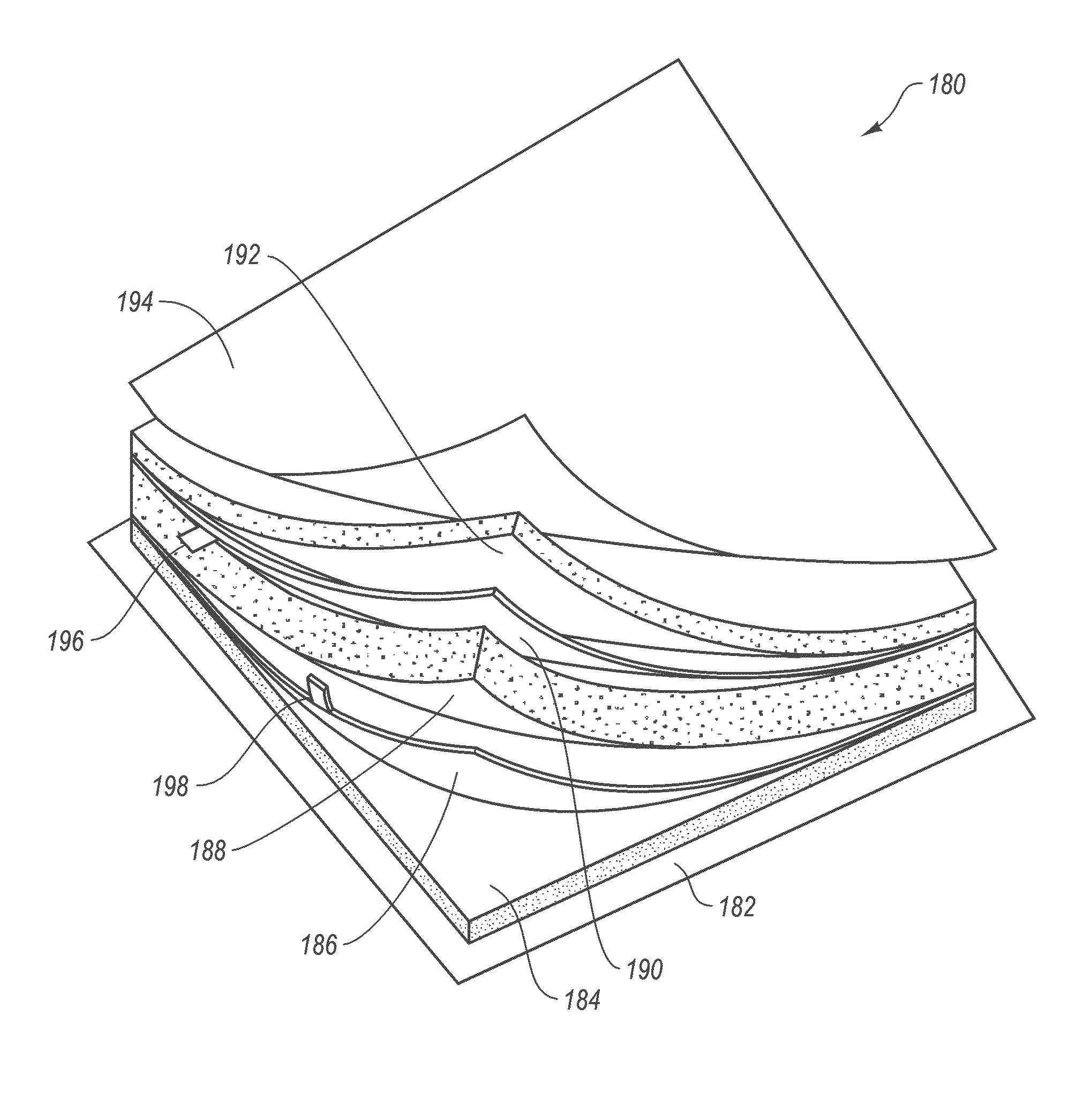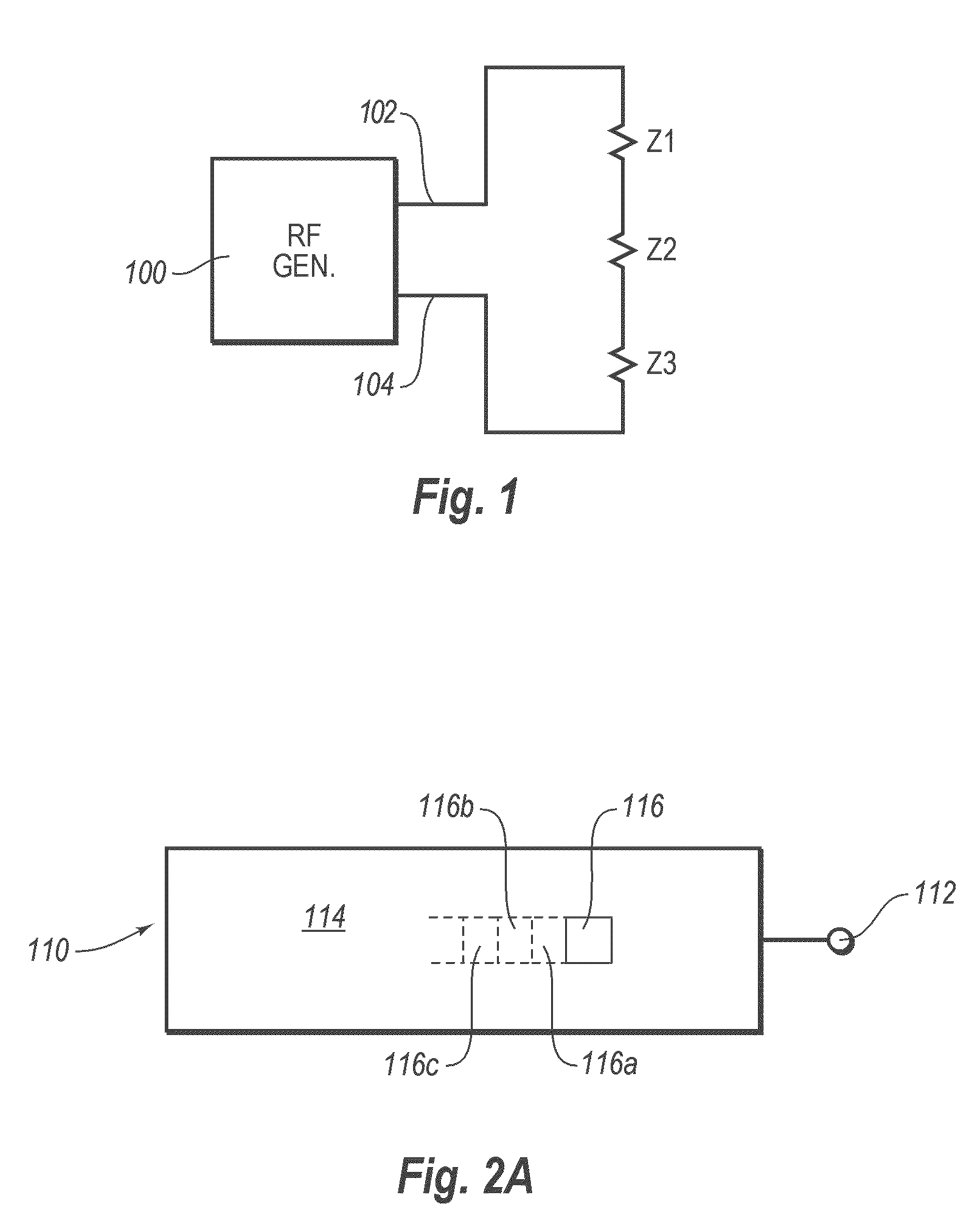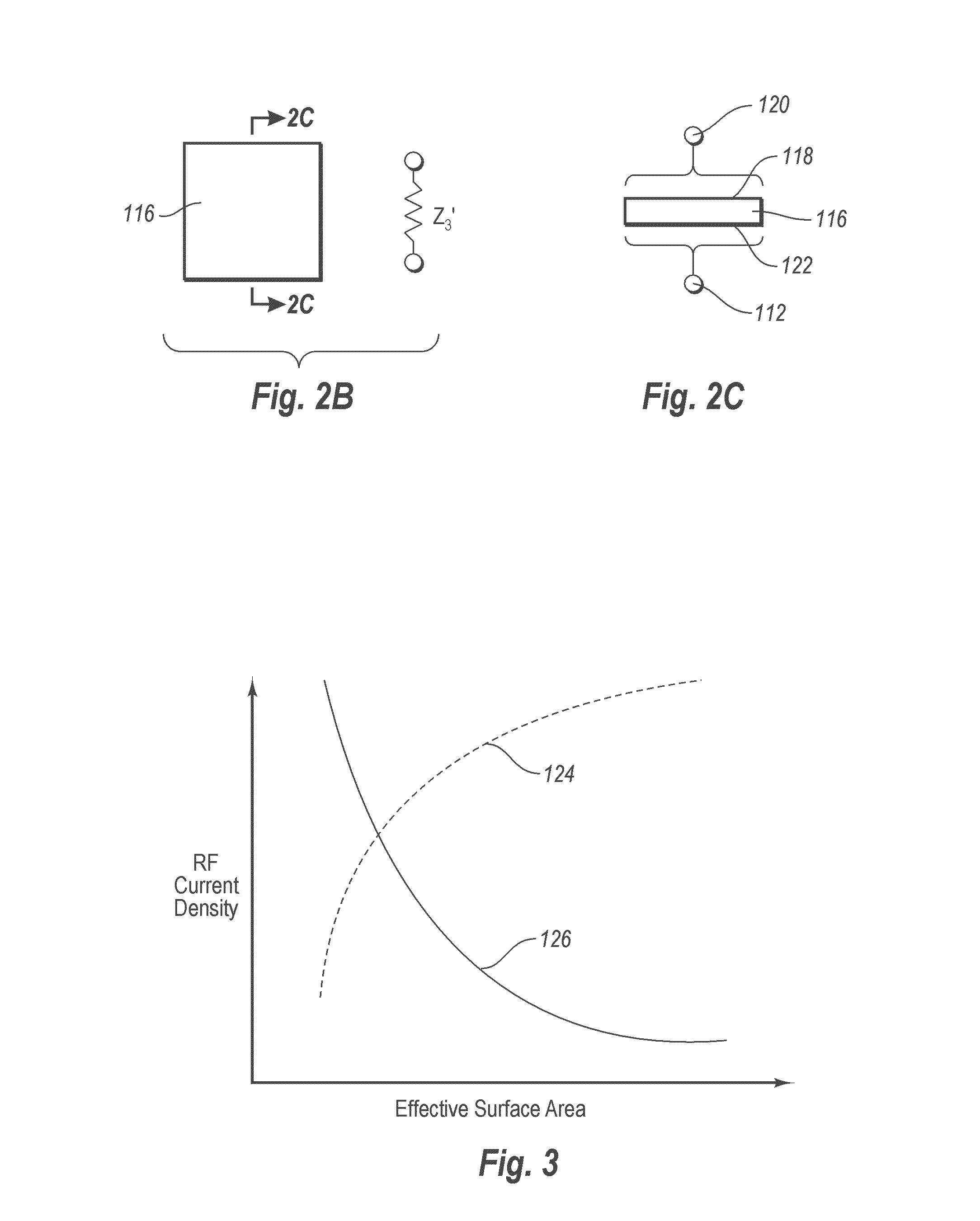Self-limiting electrosurgical return electrode with pressure sore reduction and heating capabilities
a technology of electrosurgical which is applied in the field of electrosurgical return electrode and electrosurgical return electrode, can solve the problems of unfavorable patient burn, increased surgical costs in the united states of several tens of millions of dollars, and hospital burns still occurring in patients, so as to reduce the occurrence of pressure sores and eliminate patient burns
- Summary
- Abstract
- Description
- Claims
- Application Information
AI Technical Summary
Benefits of technology
Problems solved by technology
Method used
Image
Examples
Embodiment Construction
[0059]The electrosurgical return electrode of the present invention employs geometries and materials whose impedance characteristics, at typically used electrosurgical frequencies, are such that it self-limits current densities (and corresponding temperature rises) to safe thresholds, should the contact area between a patient and an effective working surface of the electrode be reduced below otherwise desirable levels. Additionally, the self-limiting electrosurgical electrode is capable of warming a patient that is positioned on the electrode. Furthermore, the self-limiting electrosurgical electrode is adapted to prevent the formation of pressure sores on a patient while the patient is positioned on the electrode.
[0060]To aid with understanding the various aspects and illustrative embodiments and features of the present invention, discussion will first be made with respect to the structures and features of electrosurgical electrodes that provide self-limiting characteristics. Follow...
PUM
 Login to View More
Login to View More Abstract
Description
Claims
Application Information
 Login to View More
Login to View More - R&D
- Intellectual Property
- Life Sciences
- Materials
- Tech Scout
- Unparalleled Data Quality
- Higher Quality Content
- 60% Fewer Hallucinations
Browse by: Latest US Patents, China's latest patents, Technical Efficacy Thesaurus, Application Domain, Technology Topic, Popular Technical Reports.
© 2025 PatSnap. All rights reserved.Legal|Privacy policy|Modern Slavery Act Transparency Statement|Sitemap|About US| Contact US: help@patsnap.com



